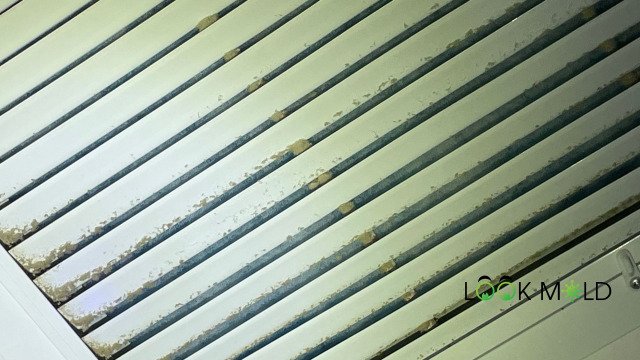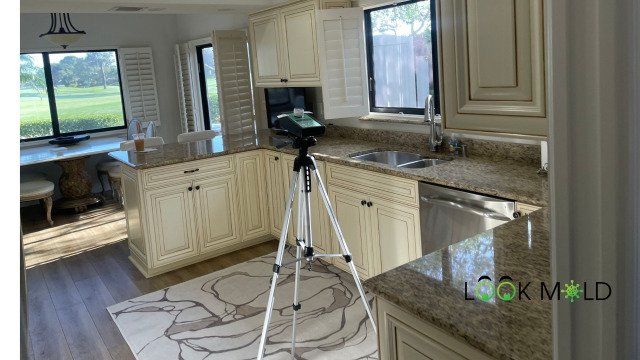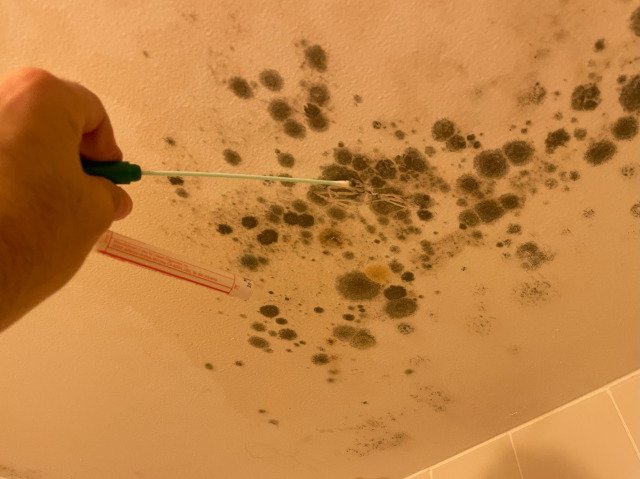Professional Mold Remediation Services
Don't Let Toxic Mold Put Your Family's Health at Risk
Stop mold damage before it spreads. Call now for a free, no-obligation estimate from a local remediation expert.
Free Estimate · Zero Obligation · Available 24/7
How To Test For Mold In A Home - Air Sampling or Dust Sampling?
As a licensed mold assessor, I get this question all the time:
“Can I test for mold myself?”
The answer is yes, but with a few caveats.
Let me break it down like I would for any client on the phone.
First off:
Mold testing and mold inspections are not the same thing.
Testing is just collecting data — a snapshot in time. A full inspection is where the real detective work happens.
But if you're just looking to see what’s in your air or dust, and don’t need an expert interpretation, mold testing can absolutely be done DIY.

What Is Mold Testing?
Mold testing involves collecting a sample from your air, dust, or surfaces and sending it to a lab to determine:
- How much mold is present
- What types of mold are there
This can be done through:
- 🌀 Air sampling
- 🧼 Surface swabs
- 🧹 Dust sampling
- 🧪 Bulk material testing
- 🔬 ERMI (DNA-based mold testing)
Let’s go over the two most useful ones for homeowners: air sampling and dust sampling.
How Does Air Sampling for Mold Work?
Air sampling is done using a calibrated air pump with a spore trap cassette.
It draws in air (usually for 2, 5, or 10 minutes) and traps any mold spores onto a sticky medium inside the cassette.
The sample is sent to a microbiology lab where spores are counted and identified under a microscope. You’ll get:
- Raw count
- Spores per cubic meter (M³)
- Mold species detected

How to Take an Air Sample (DIY Steps)
- Set the pump on a tripod about 4–5 feet off the ground
- Attach a cassette and remove stickers covering the sample inlets
- Run the pump for 5 minutes (or per manufacturer instructions)
- Reseal the cassette, label it, and ship it to a lab
Should You Test With or Without Activity?
Common Practice:
Professionals recommend testing under “controlled” conditions (no people, doors/windows closed, HVAC running). This gives you a baseline.
Contrarian View:
Test with people walking on carpet or sitting on furniture to see what gets stirred up.
My take as a pro?
Both have value — but if you're worried about what's in the furniture or carpets, skip the debate and just take a dust sample.
✅ Pros of Air Sampling
- Tells you what’s currently in the air
- May help detect hidden mold sources
- Lab can ID mold species
- Quick turnaround time
- You can compare indoor vs outdoor levels
❌ Cons of Air Sampling
- Only shows results from that moment in time
- Doesn’t detect settled spores
- Can miss mycotoxins
- Doesn’t confirm if spores are dead or alive
- Results depend on activity, airflow, humidity
- Pricey if done by a pro
- Labs may not detect spore clusters (which could point to colonies)
Is Air Sampling Worth It?
Yes — if it’s done correctly and paired with a visual mold inspection.
No — if it’s your only testing method.

What Is Dust Sampling for Mold?
Dust sampling involves collecting dust from floors, furniture, or HVAC returns and sending it to a lab. The lab analyzes the spores in the dust, which tells you:
- If mold has been present in the past
- What kind of spores have settled over time
"Mold does not have to be alive to cause an allergic reaction. Dead or alive, mold can cause health issues."
— EPA
Dead mold is still a problem — especially because dry spores get aerosolized easier.
How to Collect a Dust Sample
- Use a swab or cassette to collect a nickel-sized amount of dust
- Place in a sealed bag
- Send to a mold testing lab (some specialize in DNA or ERMI testing)
Some labs may ask you to swipe dust from various surfaces — others may want a single pile of settled dust.
What Is ERMI Testing?
ERMI stands for Environmental Relative Moldiness Index. It’s a DNA-based test using PCR (polymerase chain reaction) to identify the presence and quantity of 36 mold species.
ERMI tests for:
- 26 water-damage related molds
- 10 background/common indoor molds
ERMI gives you a numeric score to help assess mold risk.
Learn more: What is ERMI Testing?
✅ Pros of ERMI Testing
- Highly sensitive detection using DNA
- Great for detecting historical mold issues
- Not influenced by background debris
- Can find toxigenic mold species
❌ Cons of ERMI Testing
- Limited to 36 mold species
- Costly (~$300–$500 per test)
- Harder for homeowners to interpret
- Doesn’t show if mold is airborne
- Spores could have come from outside sources
Air Sampling vs ERMI: Which One Is Better?
Honestly?
It’s not about which is better — it’s about what you need to know.
| Use Case | Best Method |
|---|---|
| Testing current air | Air Sampling |
| Checking past exposure | ERMI or Dust Sample |
| Finding hidden mold | Visual + Moisture Mapping |
| On a tight budget | DIY Dust Sampling |
Final Thoughts from Brad
Whether you go with air sampling, ERMI, or both — here’s the truth:
No test is as valuable as a thorough visual and moisture inspection.
Testing can help — especially if you’re sick, buying a home, or recovering from water damage — but nothing beats experience and trained eyes.
Explore Related Topics:
Notice an update we should make?
We strive for accuracy. Contact us here if you see incorrect or outdated info on this page.
